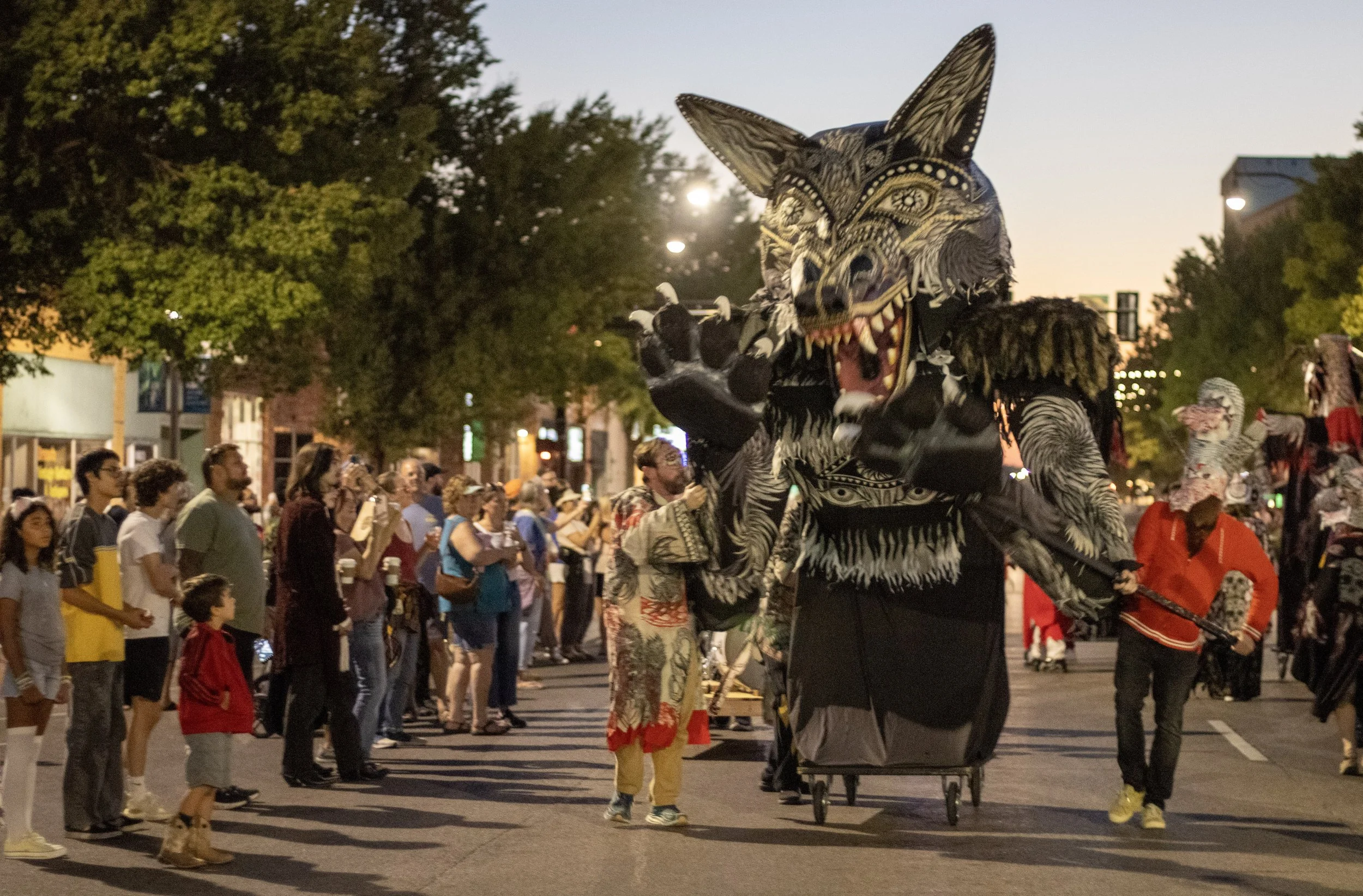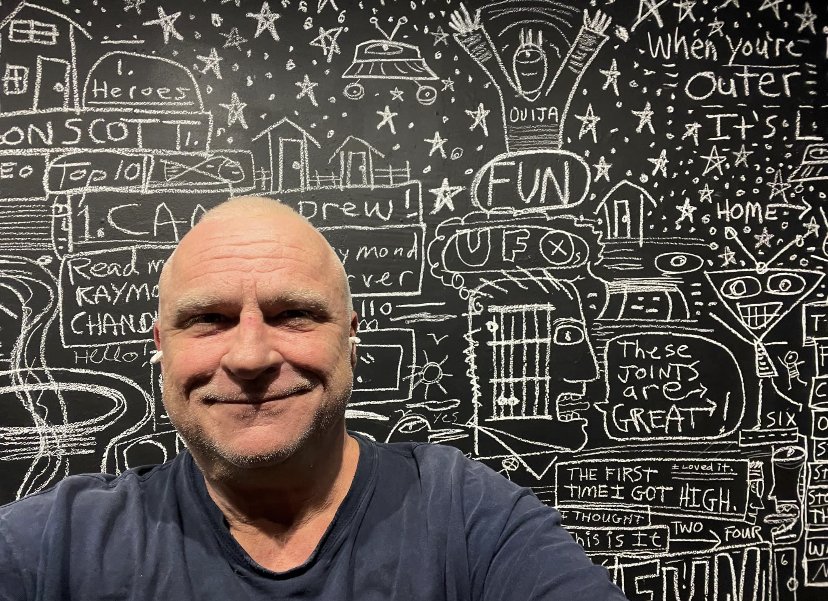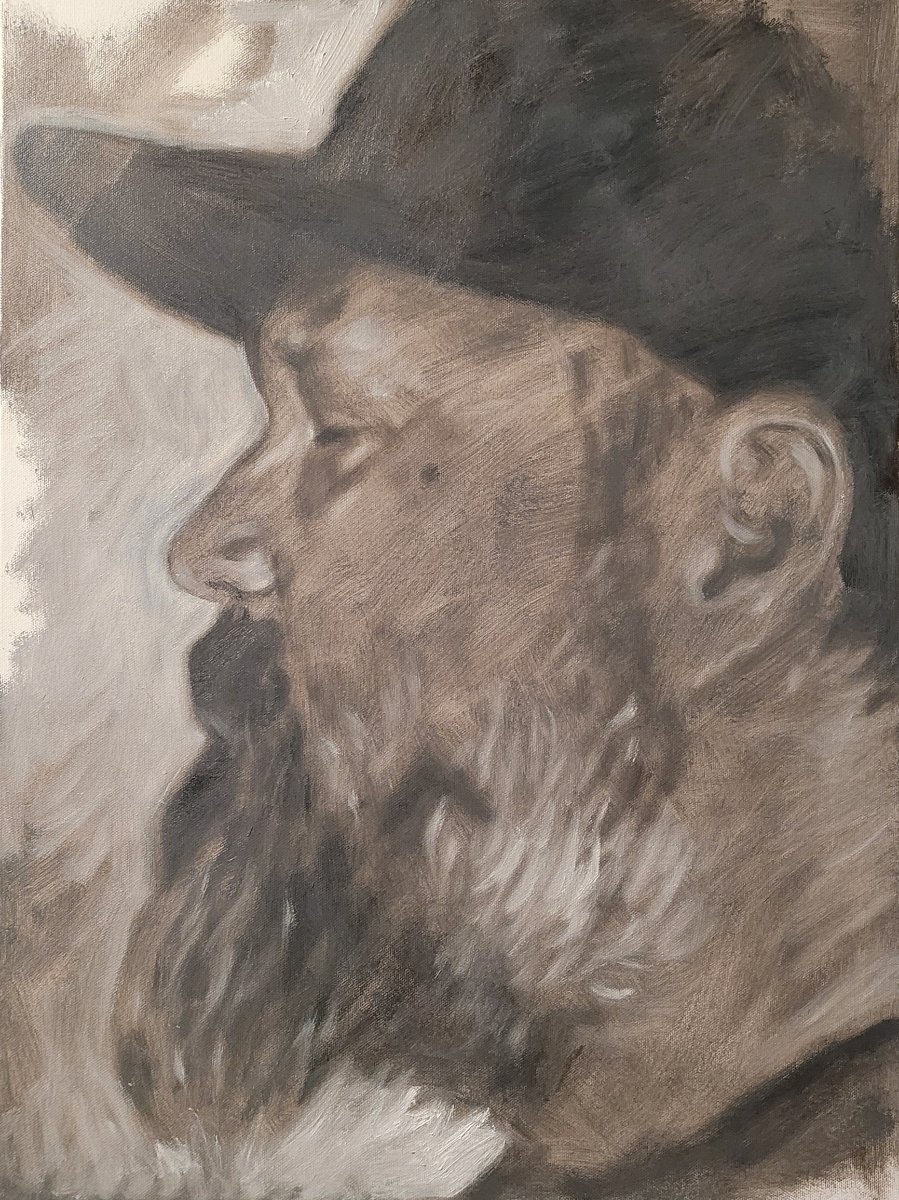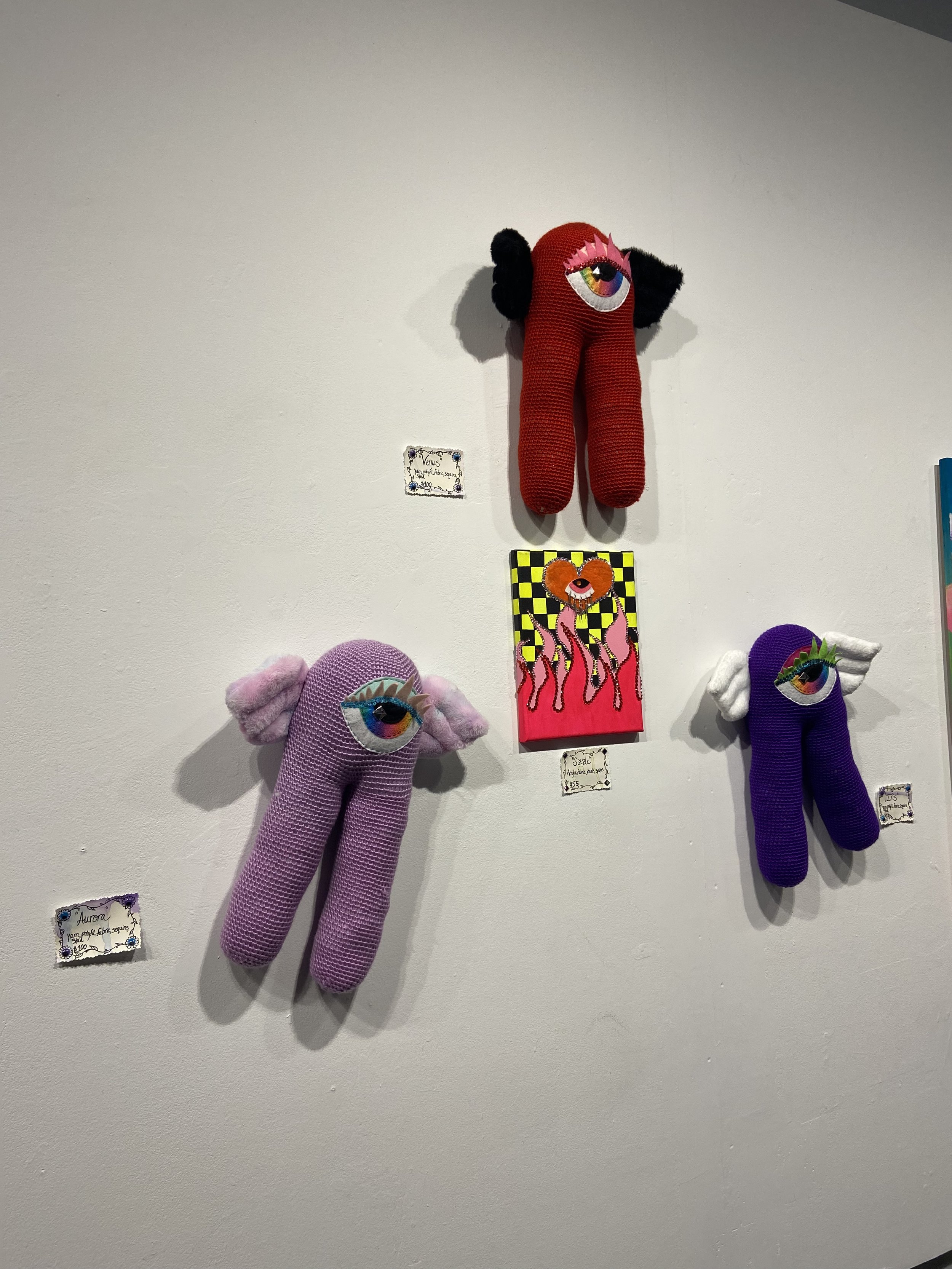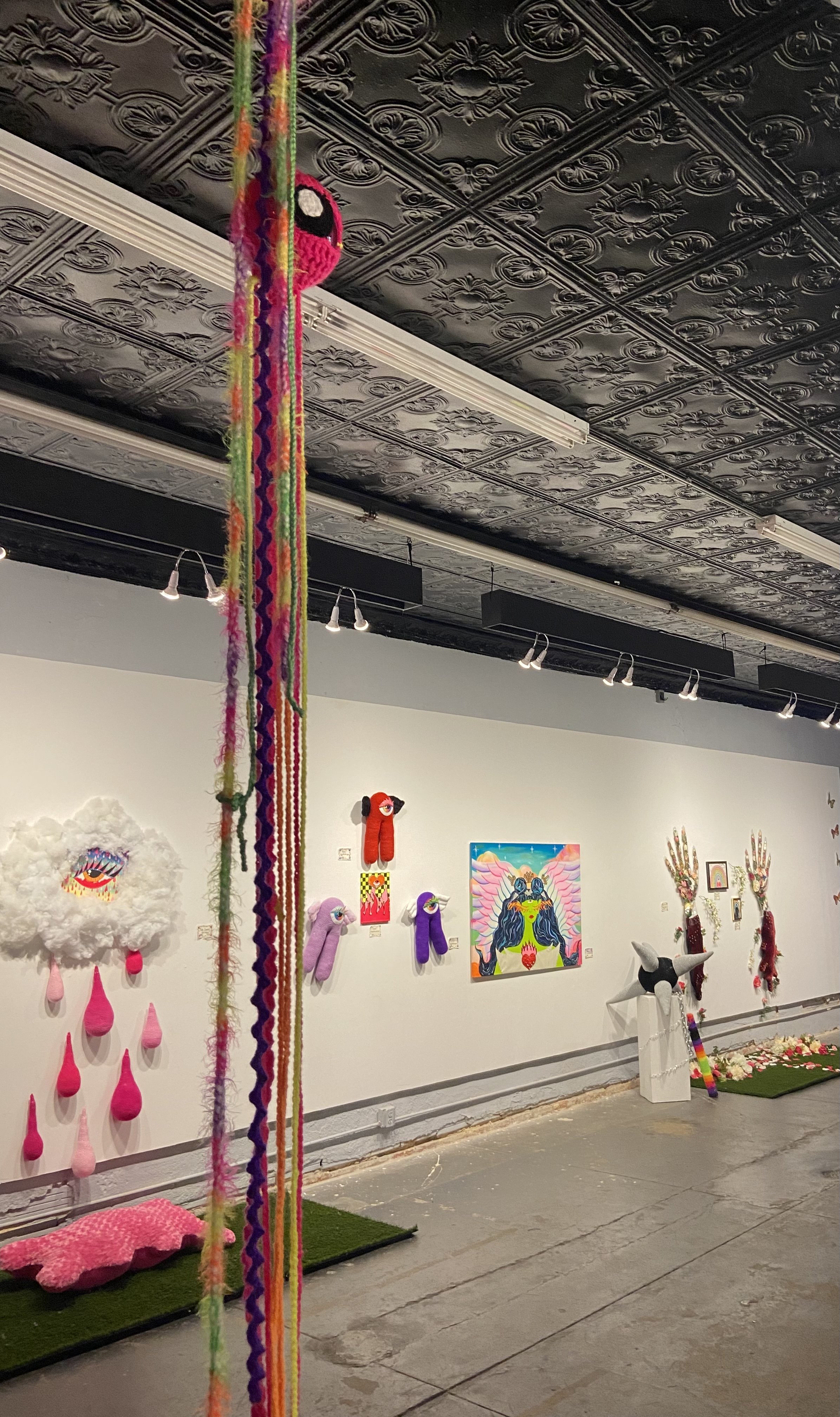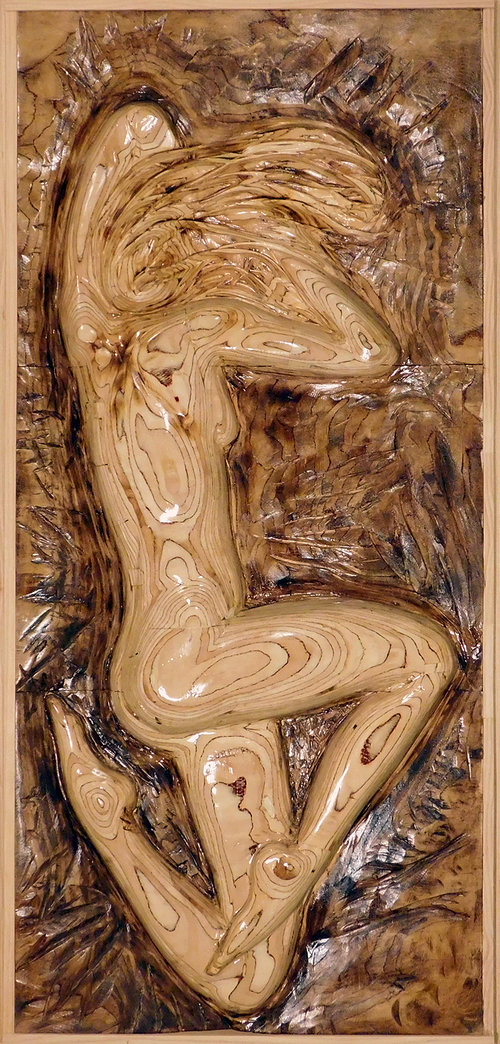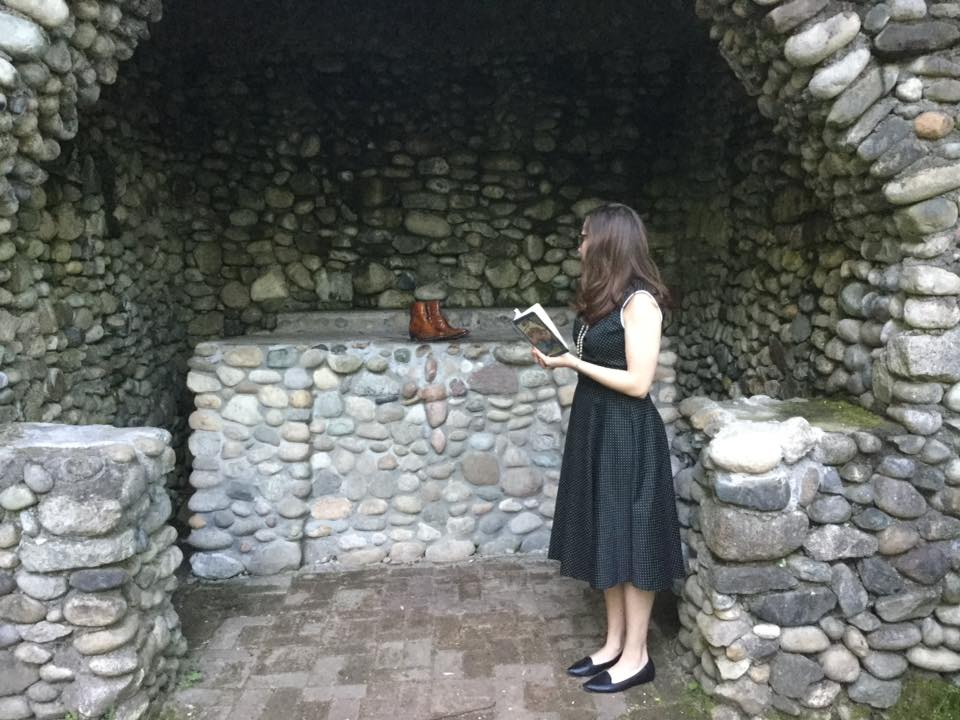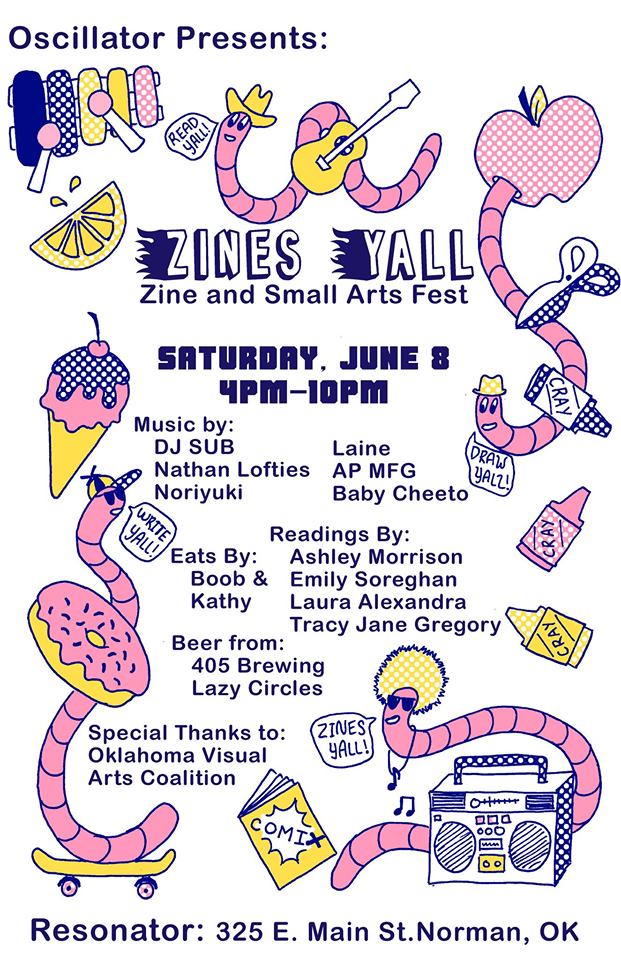Poet: And I think, to circle back to your, thoughts about being not formally trained, you know, not being formally trained is that there are many different kinds of artists.
Some really thrive in that structure, and they can create well in that structure. But that's not the only way, not even to say “but”, there are many ways to create.
You are intuitive and and your mark making is very intentional. And if I walked in here, I wouldn't say “this is a person who has not been trained.” Not that I'm the end all be all of that. But if I walked into a gallery and I saw your work, I would never question that you had trained yourself in art, whether it was formally through college or on your own. Your mark making is intentional.
And I feel that has allowed you your voice and creative process as an Artis. If you were “formally” trained, you might not have access to paint the way that you do.
It might have stopped you from being able to access that receptive mode that you go into and that inspirational flow.
Clare: Yeah, I think that's true. People have said that to me before in music. I’ve worked with all sorts of musicians, both like me and unlike me in that way. But all of it's needed, especially if you're going to collaborate.
So, yeah, I've worked with people that are, you know, like theoretical geniuses. And I'm like, “I don't know any of this”. And they say, “just don't learn it”. And yet other people love it (music theory)and are into it, and they create amazing pieces with that theory. So yeah, there's so many different ways to approach it.
But I do feel like there's some sort of subconscious shut down that occurs when people have tried to really teach me guitar before.
I'm the type of person that I'll put in the work to learn something, like if I'm in school or whatever it is I'm doing that I need to learn. But for some reason, with that, with this thing that obviously has been a huge part of my life… the music, the art…there's this subconscious log out where I don't take in what they're teaching me.
So I'm like, “oh, well, yeah, just keep just keep doing it for …”(pauses and redirects) …because the meditative place is one where you're not actively using your mind.=
So, if I'm enjoying these things because they bring me that meditative quality of mind, it doesn't make sense for me to fill my mind with things while it's happening.
But I really appreciate people that do that (use music theory) because it's incredible and needed and wanted, you know?
Poet: Definitely. There’s a place for everyone. That’s the difficulty with criteria.
When you start setting criteria, you exclude someone who doesn't meet those criteria. And I think there's a long standing history of criteria in art and music. I feel that we're getting to a place where so many people are saying it's fine if you want to operate within those criteria, but it's also fine to operate outside of them.
Clare: Yes. And like, whose criteria? Like which region of the world? We could go back way before the documented, recorded history of the evolution of music and of theory. But then before that, it's like tribal, primitive music. There's beauty to that. And there isn't a specific place where the tones are supposed to go in all these different lineages.
So, yeah, I like that it doesn't have to fit perfectly on the scale or on whichever scale you're talking about. And there's beautiful stuff that does fit perfectly on the scale. So it's kind of whatever.
Poet: Yeah, it's the Both And. You know, the idea that we have to be one or the other, I think, is starting to go by the wayside. We can be both.
Clare: Yeah
Poet: We can be classically trained and we can be untrained and both exist and have their place and purpose in the world. And that's a beautiful thing.
It's letting go of that judgment. This is good. This is bad. This is right. This is wrong. And just embracing what is and experiencing it as exactly what it's meant to be.
And that's what your music and work feels very much to do about this is a moment in time. I've documented it with paint, I documented it with sound, and I'm sharing it with you because that seems to be what needs to happen. You know, it needs to express itself in the world.
And its kind of like, you know, when you think about there being a person for everyone, or several people. Whether it's a partner or a friend. And sometimes we can only hear things we need to hear in life, through their voice. People that connect for a reason.
And there are people that will only be able to hear the message through your art, that will only be able to hear the sound through your music.
Clare: Yeah. And it might be a very small fraction of people, too. It's like, who knows what, what's going to resonate?
But… Who cares?
Poet: Right? We have to let go of the size criteria. Like, “everyone in the world needs to know me!”
Clare: Well, and that's whenever you start being methodical, because you're trying to appeal to larger groups. Yeah, in my early 20s, there were people sending my stuff to record labels, and it just became this whole weird thing.
And I was like, “I really don't want anything to do with this”.
I'm a pretty introverted person. I say often “I want to just be a monk”. That's how much I do love that life. In reality, I'm not doing art as a pursuit. Maybe I was when I was 21, you know? That doesn't sound appealing to me.
So, however many people, whoever it does resonate with, that's wonderful because then there was something to it besides just for my moment of meditation that day.
Poet: Right. And then that just falls right in line with what what your work is about: it's Universal. So it will find its way to whoever needs it.
And that's the beautiful thing about it is that, you know, we're all spiritual seekers on some level. I mean, it's not contained to just reading a book or sitting on a meditation cushion. Right? Life is meditation. And that comes through in your work. And that's what you're sharing with us. That's what we feel.
And we talked about power, before the interview started. That power isn't necessarily an explosion of action, but it's that internal strength and quiet. And meditation can be even the flip side. So while it's a meditative process, the colors that you use and the lines that you use express so much. Meditation in the universe, isn't always internal stillness, but it's external as well.
And so it's a language all of its own. And again, that comes to the Both And.
It can be quiet and it can be loud, it can be still and it can be movement.
Clare: Yes. And, yeah, just like nature. Nature can be really peaceful and still or can be a tornado. Or hurricanes.
Poet: Perfectly said.
So, shifting gears a little, do you have other creative outlets besides painting and music, other ways that you're exploring creative expression?
Clare: Gardening. Cooking. I haven't gotten like deep in the cooking mode like I used to in a minute. So I need to do that soon (laughs), but, yeah, I do. I love being in that intuitive place with cooking. Seeing just like, well, what is around, what is in the kitchen, and creating something from that.
And I'm just obsessed with gardening.
I long to be tending to plants. Like all day.(Laughs sheepishly)
So, that's definitely a main one. I love, the long arc of it, especially because I like to do a lot of volunteer gardening.
Getting down really close to the soil to see little sprouts coming up, you know, and then like weeding around that little sprout. It is similar to the painting, I guess. Kind of like letting it reveal itself and then like sculpting around it
Yeah, I'm obsessed with gardening.
I just want to continue doing more, grow all the things.
Poet: On that idea of how intuitive creativity intertwines with everything, have you ever thought about combining your art and your music in a show to do more of a performative based or collaborative installation? So, is there is there ever a time that the two would exist together in a space?
Clare: Yeah. I mean, it might be happening at this next show. (More laughing from both of us)
Poet: Ok! That was the next question: could that happen at this show or could we book one? Let’s do that!
Clare: Yeah, yeah. I mean, there's so many things that that could be done.
We were thinking about doing a Glitch set at it, but I'm like, I'd rather not.
The painting stuff seems so much more about, like, this tranquil space for me. And the paintings are the loudness.
But I was thinking about vocal loops as well as percussive stuff. one of our friends Brent, you might know him, too, but he's a really good drummer. I was even imagining him and I both doing percussive stuff at the same time.
Who knows? (Smiles) It’s coming up soon, but we'll see what happens.
I was just wanting to stick to a more primal kind of chanting, like loops or something. Maybe some percussive elements.
Poet: Playing live or a recoding in the background?
Clare: Well, I actually actually at the last show I did there with Casey, I had a vocal loop playing in the background at one point. But I think this time I would just like bring my vocal loop and maybe make some noise using it. Yeah.
Poet: Excited for that potential and will be curious to see how that evolves!





